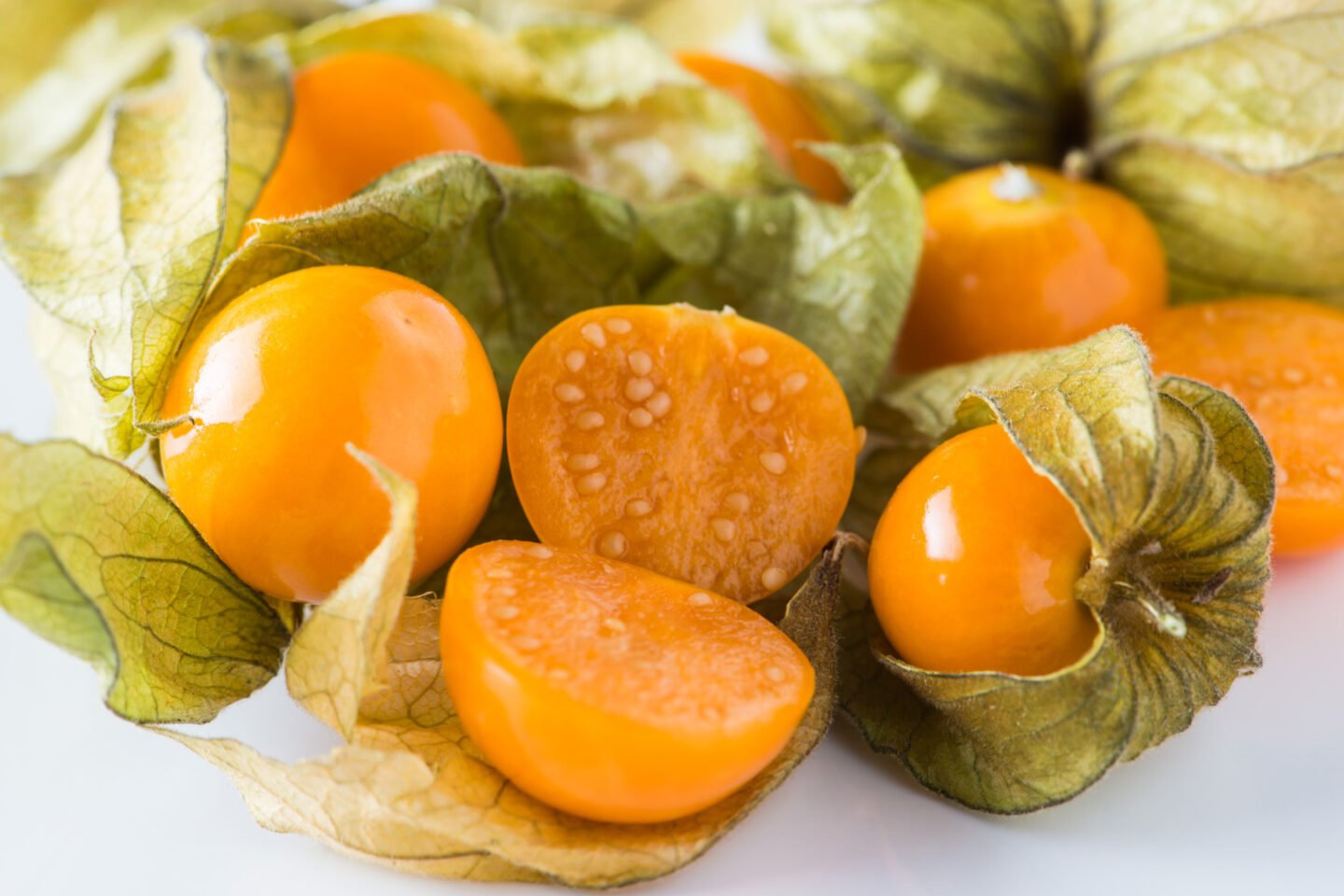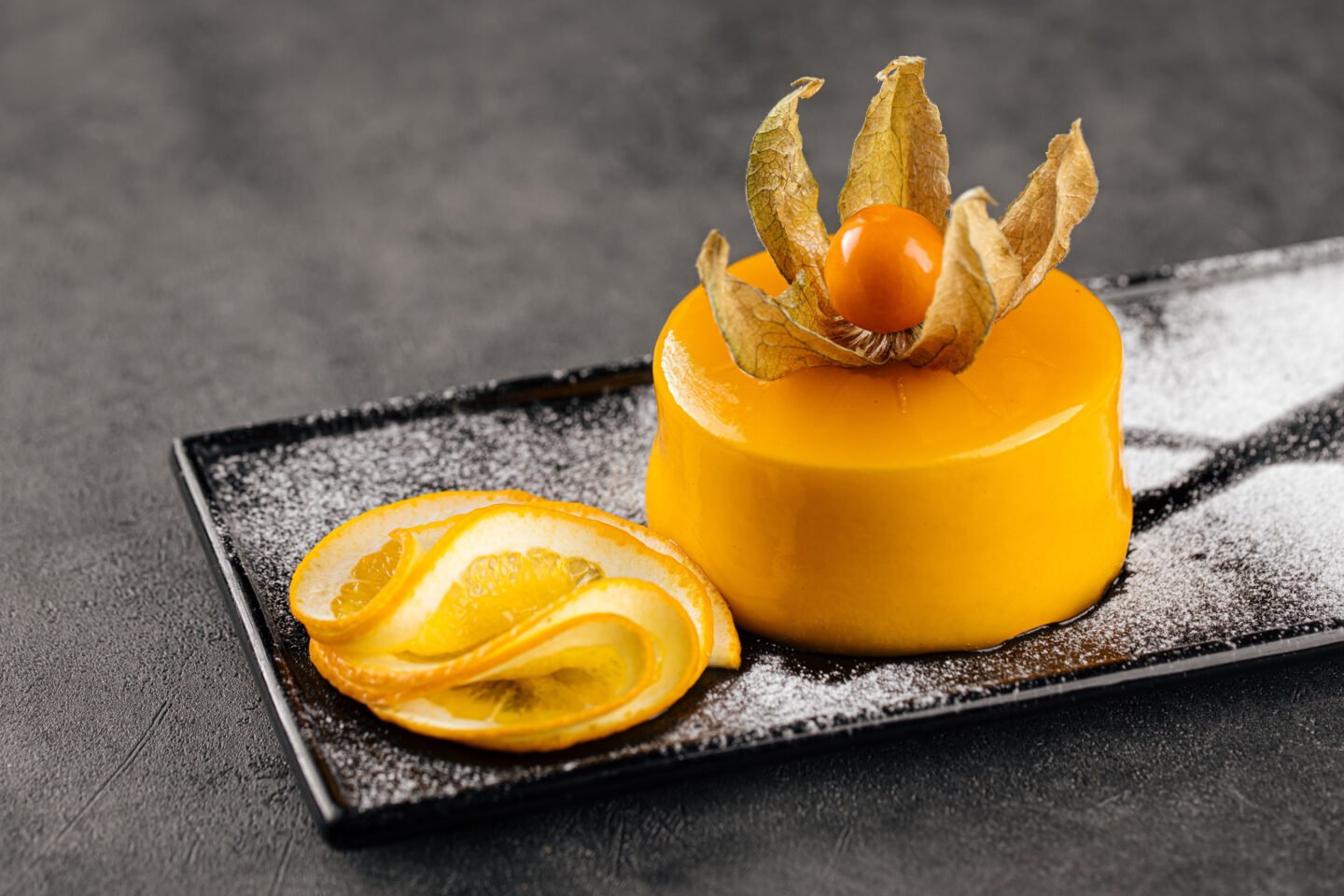The physalis is a Peruvian fruit with a long history dating back to the Incas. This bright orange berry looks a lot like a cherry tomato and is encased in an exotic, papery calyx. Its vine produces a lot of fruits that are mostly unblemished thanks to the protective outer layer.

Are you considering growing this plant at home? Maybe you’d like to buy some from the store but aren’t sure if they’re worth the money? If so, keep reading to discover what a physalis tastes like. We’re about to take a close look at this fruit’s flavor, texture, uses in the kitchen, and more.
Table of Contents
What does physalis taste like?
The physalis has a unique sweet and tart tropical flavor, combining hints of cherry tomato, pineapple, fig, and strawberry. The skin is similar to a tomato's and is perfectly edible. After biting through the firm exterior, the juicy flesh inside is soft with many small, edible seeds. Its fragrant aroma is enticing, similar to that of a pineapple but not quite as sweet-smelling. Even though the outer husk (called the calyx) is not edible, it can be used to decorate cakes and fruit salads because of its intricate design.
Related articles:
Ever wondered, "What does a starfruit taste of?
Have you ever asked, "What do cucamelons taste like?"
Are you curious... What does a longan taste like?
Culinary Uses
The physalis is great to eat out of hand. If you are lucky enough to have a vine at home, you’ll find they are prolific producers of fruit and they’re a perfect mouth-sized bite.
Physalises are versatile in cooking and work well in sweet and savory dishes. If you’d like to use them for your next recipe, you may like to consider the following options:
- Make sweet jam with a tangy undertone.
- Dry the berries and add to muesli.
- Made into chutney or salsa.
- Add to confectionery or dip in chocolate.
- Churn ice cream with the fruit.
- Toss into a salad in place of cherry tomatoes.
- Oven roast, drizzled in olive oil.
- Perfect in a tarte Tatin and also traditional tarts.

How to Store Physalises
Store a physalis in its husk in a cool, dry place, not the refrigerator. Unripe fruit can be picked and left to ripen in a sunny place until it is bright orange.
Fast Facts
They have many alternative names.
Other names for physalis include cape gooseberry, golden berry, Pichu berry, ground cherry, Aztec berry, Inca berry, and Peruvian ground cherry. The French name is "amour en cage," which translates to “love in a cage," a reference to the flavorsome berry inside the casing.
The name "Cape Gooseberry" is likely to have originated with the British when they first settled on the Cape of Good Hope, in South Africa.
They're grown globally.
They originated in South and Central America and are now grown around the world. The physalis is commonly grown in Australia, New Zealand, China, Hawaii, and South Africa. Columbia is a major producer that exports the fruit around the world.
Family
The physalis is from the Solanacae family, the same as the tomato, tomatillo, aubergine, and potato. With the alternative name of Cape Gooseberry, you’d expect this fruit to be related to the gooseberry. However, they are not from the same family. Its scientific name is Physalis peruviana.
Extra reading:
Find out what dragonfruit tastes like.
Learn all about the taste of kiwano melon.
Discover the best lingonberry substitutes.
Quinoa and Physalis Recipe

Quinoa Gooseberry Salad
Ingredients
- ½ cup red cabbage chopped
- ½ cup lettuce sliced
- ½ yellow bell pepper sliced
- 1 cup butternut squash cooked and diced
- 2 cups quinoa cooked
- 4 physalises halved
- 10 cherry tomatoes
- salt and pepper to taste
Instructions
- Add red cabbage, lettuce, bell pepper, and squash into a large salad bowl.
- Layer quinoa over the top of the vegetables.
- Garnish with physalises and tomatoes.
- Season with salt and pepper, then serve with your favorite vinaigrette or dressing.
Notes
Nutrition
Nutritional Information
Physalis is a healthy fruit that is packed with antioxidants and high in vitamins A and C. It also has 14% of the daily recommended intake of niacin. Source.
Physalis Nutrition (per 100 g)
| Energy | 222kj |
| Protein | 1.9g |
| Total Fat | 0.7g |
| Carbohydrates | 11.2g |
| Calcium | 9mg |
| Iron | 1mg |
| Phosphorus | 40mg |
| Vitamin C | 11mg |
| Niacin | 2.8mg |
| Vitamin A | 720IU |

Summing Up
Would you like to know what Physalis tastes like? It’s a combination of sweet and tart in one mouthful. But is this fruit worth growing or buying at the store? We’re going to be brutally honest: this fruit won’t be to everyone’s liking. This probably explains why it isn’t a mainstream, popular item in the supermarket.
The team all taste-tested this fruit, and we agreed that it didn’t have any scary flavors or aromas like fresh jackfruit or durian. But there was something about the fruit that wasn’t to our liking. It's one of those fruits that some will love, but probably quite a few won’t. If you’re at a restaurant and wondering whether to order a dish that contains this ingredient, we say give it a try! On its own, the fruit may not be perfect, but paired with a rich, meaty pulled pork or roast duck, it could easily help the dish shine.
Have you tried Physalis before? What did you think of its flavor? Please let us know in the comments below.

Leave a Reply